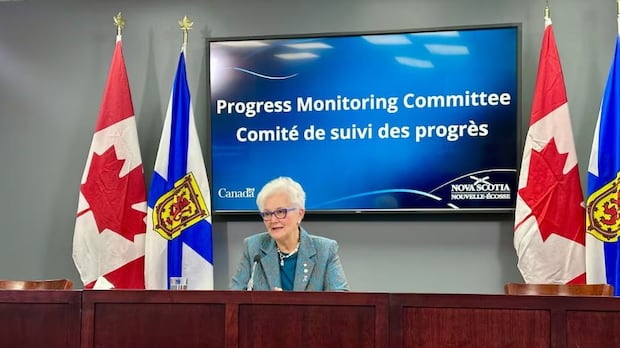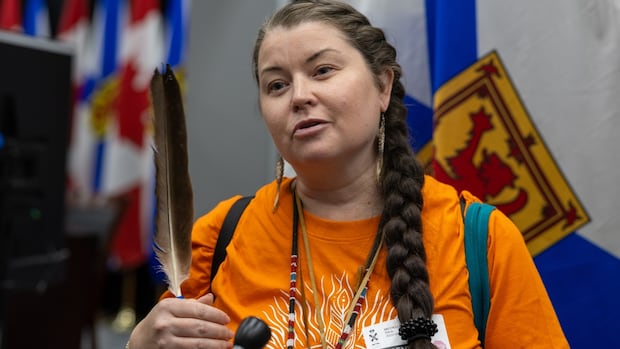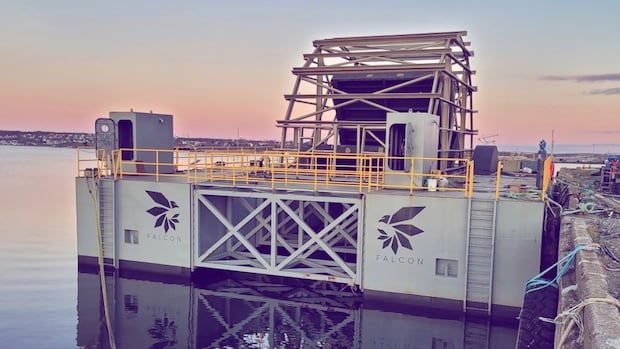DFO seeks feedback on draft of Atlantic salmon strategy

Fisheries and Oceans Canada is seeking feedback on a draft of its national strategy on Atlantic salmon.
The goal of the strategy is to restore and maintain Atlantic salmon populations and habitats. The deadline to submit feedback on the draft is July 30, with the department aiming to publish it by the fall.
“We hope that the strategy will bring back salmon in a way that makes them viable for people to enjoy,” Livia Goodbrand, a senior policy adviser on the strategic policy team at the DFO, told CBC News on Wednesday.
The strategy reflects a 12-year plan that involves tracking about three generations of Atlantic salmon and was developed after “discussion and collaboration with Indigenous peoples and the broader Atlantic salmon community,” the draft noted.
It involved “extensive feedback” that came over two years of engagement and “expertise gained over decades of study through a scientific lens.”
The draft notes four outcomes to guide the future of Atlantic salmon activities for the next 12 years:
- A collaborative place-based approach to restoration supports healthy, climate-resilient Atlantic salmon populations.
- Atlantic salmon-related processes and policies are aligned with the United Nations Declaration on the Rights of Indigenous Peoples Act and its supporting Action Plan.
- A vibrant, inclusive and knowledgeable Atlantic salmon community is positioned for success.
- Practices that support the management and protection of Atlantic salmon are transparent, well-informed and responsive to the needs of salmon in a rapidly changing world.
“We will read every single comment and we’ll use that feedback to update the draft,” Goodbrand said.
The Atlantic Salmon Federation, a science and advocacy organization headquartered in New Brunswick, is planning to submit feedback.
Neville Crabbe, the group’s executive director of communications and marketing, told CBC News the draft is a significant step toward finalizing and funding Canada’s wild Atlantic salmon conservation strategy.
“It’s been a long time coming,” Crabbe said. “The strategy itself goes back to 2021, and even before that, over a period of about 15 years, there were ministerial committees, there was a wild Atlantic salmon conservation policy and implementation plan, and it’s all led up to what we have now in this draft strategy.”
The biggest concern, Crabbe said, is that there isn’t any funding currently attached to the strategy. He pointed out Canada’s Pacific salmon strategy was a $647-million investment.
“We would certainly like to see something commensurate here on the East Coast. Perhaps it doesn’t reach that level of the Pacific salmon strategy, but it really has to be significant,” he said.
“And I think a lot of the vaguery and maybe some of the word salad that we see in this draft report, I believe, is the result of no dedicated funding at this point.”
‘We need this investment’
Goodbrand said they would find out more about funding after the draft is published.
Crabbe said the Atlantic Salmon Federation is looking at the document critically because “it’s so important and we need this investment.”
“There’s momentum right now. If you look at total adult Atlantic salmon returns to North America, they’re on a 30-year increasing trend,” he said.
“A lot of those gains have been in places like Quebec and Newfoundland and Labrador, and there are certainly areas where populations are in trouble. But there are winnable conditions right now, and with the whole salmon conservation community pulling together and an influx of new resources, I think that the future for wild salmon and wild rivers in our part of the world is bright.”




